Whole-House Surge Protection with Compact, UL Type 1 Plug-On SPD
Introduction
Power surges — from lightning strikes, utility switching and upstream load events — cause costly damage to appliances, electronics and critical systems. The new **POSP 20 Series** plug-on surge protective device offers an easy, reliable way to add whole-house surge protection at the breaker panel. Designed as a compact UL Type 1 SPD with quick plug-on installation, POSP 20 delivers high-energy surge suppression and clear LED status indication for peace of mind.
Why choose a Plug-On SPD for Whole-House Protection?
A plug-on SPD installs directly into the load center and minimizes lead length between the SPD and the service, which significantly improves suppression performance. For homeowners, installers and electrical contractors, plug-on SPDs mean:
- Fast, space-saving installation— fits two adjacent 1-inch poles in standard load centers.
- Superior surge suppression— shorter lead lengths reduce let-through voltage to downstream equipment.
- Clear status monitoring — LED indicates power and protection health for easy maintenance.

Key Features of the POSP 20 Series
UL 1449 5th Edition Type 1 certified — engineered for protection at the service entrance.
Nominal discharge current (In) 20kA (8/20μs) per mode, with 50kA surge capacity for high-energy events.
Full mode protection (L1–N, L2–N, L1–L2) with Voltage Protection Ratings (VPR) suitable […]
From CAT6 to PoE: Choosing the Right RJ45 Surge Protector for Your Network
In today’s hyper-connected world, safeguarding your data infrastructure is non-negotiable. An RJ45 surge protector is the first line of defense against harmful voltage spikes on Ethernet lines. Whether you’re managing a campus CAT6 Ethernet deployment, running a gigabit backbone, or powering IP cameras with Power over Ethernet (PoE), installing the right Gigabit Ethernet SPD (Surge Protective Device) can save equipment, prevent downtime, and reduce maintenance costs.
Why You Need CAT6 Ethernet Surge Protection
Every Ethernet link—especially those spanning outdoor runs or industrial zones—is vulnerable to transient overvoltages caused by lightning strikes, switching operations, or electrostatic discharge. Unprotected RJ45 ports can translate a single surge event into damaged network switches, routers, VoIP phones, or building automation controllers. An inline RJ45 surge protector diverts surge energy away from sensitive electronics, ensuring network uptime and equipment longevity.
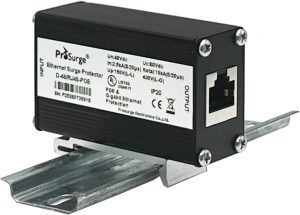
D-05/RJ45B
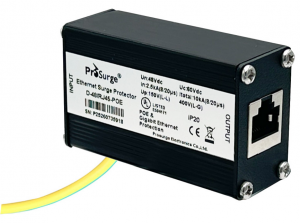
D-05/RJ45
Key Specifications of Prosurge D-05/RJ45 Series
Prosurge’s D-05/RJ45 SPD meets the rigorous demands of modern Ethernet installations:
- CAT6 Compliance & High Bandwidth
Supports Class E structured cabling up to 250 MHz, fully capable of Gigabit Ethernetat 1,000 Mbps with minimal insertion loss (≤ 3 dB) and ultrafast response (≤ 1 ns). - Two-Stage GDT/TVS Technology
Combines a three-pole gas discharge tube […]
Decoding the New Benchmark in Surge Protection: Key Advancements in IEC 61643-01:2024
Introduction:
Surge Protective Devices (SPDs) serve as critical defense components in low-voltage electrical systems, safeguarding equipment against transient overvoltages from lightning strikes and switching operations. As technology evolves, the International Electrotechnical Commission (IEC) continually refines SPD standards. On December 20, 2024, IEC released the landmark IEC 61643-01:2024 standard, superseding the previous IEC 61643-11:2011. This article examines the pivotal differences between these standards and explores the technical significance of this major update.
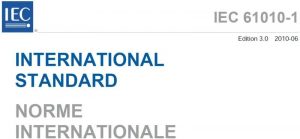
- Fundamental Shift: From Testing Methods to Foundational Framework
- IEC 61643-01:2024:This edition establishes the foundational document for the entire low-voltage SPD standards series. Its expanded scope encompasses all SPD types protecting against direct/indirect lightning effects and transient overvoltages. Beyond defining performance parameters, it systematically outlines safety requirements, test methodologies, and ratings for circuits ≤ 1000V AC (RMS) or 1500V DC.
- IEC 61643-11:2011:Primarily focused on SPD testing procedures, this version has been replaced by IEC 61643-01:2024 and the forthcoming second edition of IEC 61643-11. The new standard thus serves as the cornerstone framework for all subsequent test standard development.
- Technical Advancements: Critical Updates & Enhancements
IEC 61643-01:2024 introduces substantial technical refinements that elevate the standard’s rigor and applicability:
- Clarified Test Object Definitions:Explicit requirements now distinguish testing for complete SPD assemblies, […]
Leading Surge Protection Device Manufacturers in 2025
Surge Protection Devices (SPDs) are vital components in safeguarding electrical installations—whether in industrial plants, commercial buildings, or residential properties—from damaging voltage transients caused by lightning strikes, switching operations, or utility grid anomalies. By installing high-quality surge protection device manufacturers’ products, facility managers and system integrators can ensure equipment uptime, extend the lifespan of sensitive electronics, and meet stringent safety standards such as UL 1449 and IEC 61643-11.
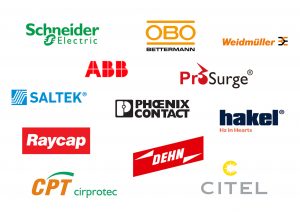
Overview of Top Surge Protection Device Suppliers
Below is a curated list of the most respected surge protection device manufacturers worldwide. These industry leaders offer a range of AC and DC surge protectors, from Type 1 and Type 2 SPDs for service entrances to compact Type 3 modules for downstream distribution boards.
1. Phoenix Contact

Origin: Germany
Founded: 1923
Headquarters: Blomberg, North Rhine-Westphalia
Specialties: Modular AC/DC surge arresters; industrial connection technology; PLCs and I/O systems; EV-charging protection
Highlights: €3.6 billion turnover; 22,000+ employees; operations in 100+ countries; innovator of the INTERBUS fieldbus and advanced surge modules.
Website: www.phoenixcontact.com

2. Citel

Origin: France
Founded: 1937
Headquarters: Paris
Specialties: Gas discharge tube technology; AC & DC surge protectors; […]
Which Surge protection devices is better? —–Prosurge’s Class I + Class II/T1+T2 Surge protection devices with VT technology
What Is a Surge Protection Device (SPD)?
A surge protector—also known as a surge protection device (SPD)—is designed to safeguard low-voltage electrical systems against damaging voltage spikes caused by lightning strikes or switching operations. By diverting and absorbing transient overvoltages, SPDs prevent equipment failures, downtime, and safety hazards. Common types include Class I (T1) SPD, Class II (T2) SPD, and combined Class I+II (T1+T2) SPD units.
Prosurge Class I+II (T1+T2) DIN-Rail Surge Protector
Prosurge’s VT series—model numbers BP25VT, BP25V, and BPS12.5V—is an IEC 61643-11 certified, TUV SUD approved DIN-rail mount surge protector, ideal for industrial control panels, building entry points, and high-risk zones (LPZ 0–2).
- VT Technologyfor ultra-low residual voltage
- High energy absorption: up to 25 kA (10/350 µs) per phase, 100 kA in NPE mode
- No leakage currentor follow-on current—extends service life
- Modular design: plug-in replaceable cartridges without shutting down the system
- Thermal disconnect: automatically isolates a damaged MOV module for added safety
BP25VT Series: Premium Class I+II Surge Protector
- Standards & Certifications: IEC 61643-11, TUV SUD (1 P/2 P/3 P/4 P)
- Impulse Current Capability: Iimp = 25 kA (10/350 µs); 100 kA NPE
- Nominal Discharge Current: In = 25 kA (8/20 µs); 50 kA NPE
- Short-Circuit Withstand: 50 kArms
- DIN-Rail Mounting: easy […]
Ensuring Reliable Surge Protection with IEC/EN 61643 and IEC/EN 62305 Standards
In today’s rapidly evolving electrical and renewable energy landscapes, selecting the right surge protective devices (SPDs) is crucial for safeguarding sensitive equipment from overvoltage events. As a professional manufacturer of low-voltage surge protection solutions, Prosurge Electronics Co., Ltd. adheres strictly to the international standards IEC/EN 61643 and IEC/EN 62305, ensuring optimal performance and compliance for every application—whether in industrial power systems, photovoltaic installations, or telecommunications networks.
Understanding IEC/EN 61643: The Benchmark for Low-Voltage Surge Protective Devices
IEC/EN 61643 is a comprehensive series of international standards governing the design, testing, and application of surge protective devices in low-voltage power systems. Incorporating these keywords—“IEC 61643 surge protector”, “low voltage SPD”, and “surge protection standards”—throughout this section will help guide industry professionals seeking best-in-class SPDs.
IEC/EN 61643-11: Defines the requirements and test methods for SPDs connected to low-voltage power systems. Products that meet this standard are rigorously tested for “surge current capacity” and “UL certification”, guaranteeing reliable operation under high-energy surge events.
IEC/EN 61643-12: Outlines selection and application principles, helping engineers choose the right SPD based on system voltage, enclosure type, and installation environment—critical for “industrial surge protection” and “building surge safeguard”.
IEC/EN 61643-31 / 61643-32: Specialized for photovoltaic installations, these parts cover SPDs on both AC and […]
The Ultimate Guide to SPD Types: Understanding UL 1449 Surge Protection for Your Electrical Systems
Ensuring robust electrical surge protection is critical for safeguarding sensitive equipment, preventing costly downtime, and enhancing power quality. The UL 1449 standard is the definitive benchmark for surge protective devices (SPDs) in North America, categorizing them into distinct types based on installation location and capabilities. Understanding the differences between Type 1 SPDs, Type 2 SPDs, Type 3 SPDs, and component assemblies is essential for effective electrical system protection and lightning protection. This guide demystifies UL 1449 SPD classifications.
The Core SPD Types: Installation & Protection
-
Type 1 SPDs (Permanently Connected, Hard-Wired):
-
Installation Location: Installed between the service transformer secondary and the line side of the main service disconnect overcurrent device (OCPD), or on the load side of the main service OCPD. Includes watt-hour meter socket SPDs.
-
Key Feature: Must be listed without requiring an external overcurrent protective device. This eliminates the risk of incorrect OCPD matching.
-
Nominal Discharge Current (In): Rated for high exposure, either 10kA or 20kA.
-
Ideal For: Primary service entrance protection, especially for whole house surge protection and critical infrastructure where surges originate externally.
-
-
Type 2 SPDs (Permanently Connected, Hard-Wired):
-
Installation Location: Installed on the load side of the main service equipment OCPD (e.g., main panel, sub-panels).
-
Key Feature: May or may not require an external OCPD, as […]
-
Achieving Electrical System Reliability: The Critical Role of Overcurrent Protective Device (OCPD) Selectivity
Understanding OCPD Selectivity: The Foundation of System Reliability
In modern electrical installations, selective coordination between overcurrent protective devices (OCPD) is paramount for both safety and operational continuity. But what exactly is OCPD selectivity? Simply put, it’s the precise coordination of protective devices—such as circuit breakers (MCB, MCCB), fuses, and specialized solutions like Prosurge SCB—ensuring that only the device closest to a fault trips. This isolates the problem while keeping the rest of the electrical distribution system operational, minimizing downtime and enhancing electrical safety.
Why Proper Selectivity Matters:
- Prevents Nuisance Tripping:Avoids unnecessary shutdowns of healthy circuits.
- Improves System Reliability:Maintains power to critical loads during faults.
- Enhances Safety:Reduces arc flash risks by localizing fault clearance.
- Simplifies Troubleshooting:Clearly identifies the fault location.
Methods for Ensuring Selective Coordination:
Achieving reliable OCPD coordination hinges on meticulous comparison of time-current characteristics (TCC curves). Key principles include:
1.Circuit Breaker vs. Circuit Breaker/Fuse Coordination: When coordinating devices (e.g., an upstream MCCB and a downstream fuse, or two thermal-magnetic breakers), their tripping curves must be analyzed.
2.Critical Safety Margin:A sufficient time gap must exist between the curves:
≥ 1 second is generally recommended for thermal-magnetic breakers.≥ 100 milliseconds (ms) is typically required for breakers with electronic trip units.
3.Manufacturer Guidance: Always consult specific OCPD manufacturer documentation for detailed selectivity tables and application notes. Proper electrical protection coordination is complex and device-specific.
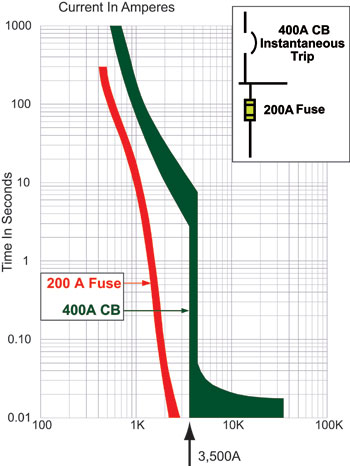
Optimizing SPD Protection: The Prosurge SCB Advantage
Surge […]
Parallel vs. Series Connection for SPDs: Which Is Better?
When selecting between parallel or series connection methods for surge protectors (SPDs), the decision should be based on specific application scenarios and requirements. Both parallel and series connections are common configurations, each offering distinct advantages and suitable applications.
Parallel Connection
In a parallel configuration, multiple SPDs are connected simultaneously to the power lines of the protected equipment. This approach provides:
1.Higher current capacity and lower grounding resistance
2.Better distribution and mitigation of lightning surges
3.Enhanced overall lightning protection for the system
4.Redundancy and failover capability: If one SPD fails, others continue to protect the equipment.

Series Connection
In a series configuration, multiple SPDs are connected sequentially along the power lines. This method offers:
1.Higher voltage withstand capability for high-voltage scenarios
2.Cascaded protection, where each SPD handles a portion of the surge energy
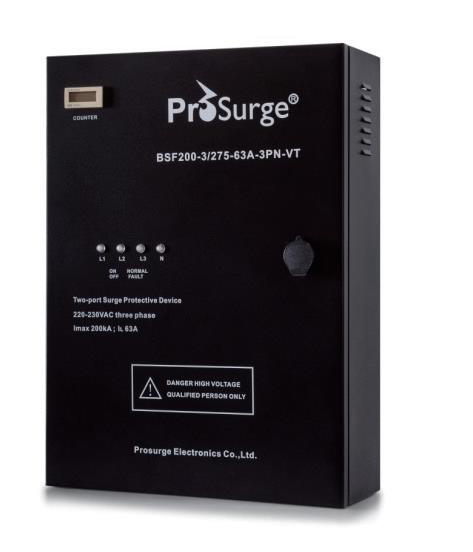
Factors to Consider When Choosing Between Parallel and Series Connections
Applications for Parallel Connections
1.Low-voltage power systems
Parallel-connected SPDs are commonly used in low-voltage systems to share surge energy and protect equipment from lightning damage.
2.Communication systems
Multiple SPDs are often installed on telephone or network lines to shield communication devices.
3.Voltage-sensitive electronics
Parallel configurations protect sensitive equipment like computers and servers by optimizing surge energy distribution.
Applications for […]
Understanding SPD Failure Modes: Open-Circuit vs. Short-Circuit and Their Impact on System Protection
Surge Protection Devices (SPDs) are critical components in safeguarding electrical systems from voltage spikes and surges. However, like any other device, SPDs can fail. Understanding the failure modes of SPD open-circuit and short-circuit—is essential for ensuring continuous protection and system reliability.
Open-Circuit Failure in SPDs
Open-circuit failure is a common mode of failure in SPDs, particularly those with varistors. This type of failure typically occurs due to the natural ageing process or thermal protection mechanisms. When an SPD reaches the end of its life, an internal disconnector is activated, rendering the SPD inoperative. This disconnector is designed to disable the SPD to prevent further damage.
In SPDs with gas discharge tubes, internal disconnectors (thermal protection) may also be used to protect against abnormal overheating caused by unexpected follow currents or surge currents. It’s important to note that thermal runaway, a common cause of failure in varistor-based SPDs, does not apply to SPDs with gas discharge tubes or encapsulated spark gaps.
A spark gap, another type of SPD, may fail in an open-circuit mode when it can no longer ignite an arc due to electrode wear or a faded electronic ignition circuit. In this state, the SPD becomes permanently open, leaving the system […]
